Interview with Advertising Photographer Peter Dazeley
Peter Dazeley, known more commonly as simply Dazeley, is a world-renowned advertising photographer in London, UK. Dazeley has also achieved acclaim for his fine art and nude photography.
He has won numerous awards and was made a Fellow of the Royal Photographic Society in 2013 (their highest award). And he is also one of the few modern photographers working with Platinum prints, producing an entire book of prints, ‘21st Century Platinum’.

Aldwych Station, Disused Platform – © Peter Dazeley
His latest work is ‘Unseen London’, a visually stunning collection at some of the hidden areas of the UK’s capital city. He goes behind the scenes in some of London’s most iconic buildings and uncovers a variety of hidden gems that even most lifelong Londoners may not know exist. The book is accompanied by text from journalist Mark Daly, who has unearthed fascinating facts to accompany the images.
I spoke with Peter about the book and his wider thoughts on today’s photography:
What made you decide to produce this book?
I have an apartment on the river near Battersea and had seen Battersea Power Station being raped by a succession of property developers. As an advertising photographer I’m always looking out for interesting personal projects and I thought the power station would be an interesting place to photograph. When I went in, it was owned by an Irish company (actually, by that point I think their bank owned it!) and was missing a wall and the ceiling. We shot in there, accompanied by foxes, pigeons and peregrine falcons (who were dining on the pigeons!).
We produced some really interesting images and my agent put them into the newsletter she sends out periodically. The shots were picked up by Creative Review, and they just went viral – they went everywhere. And a thought went off in my head that this would be a nice project to do and expand upon. That was back in 2010.
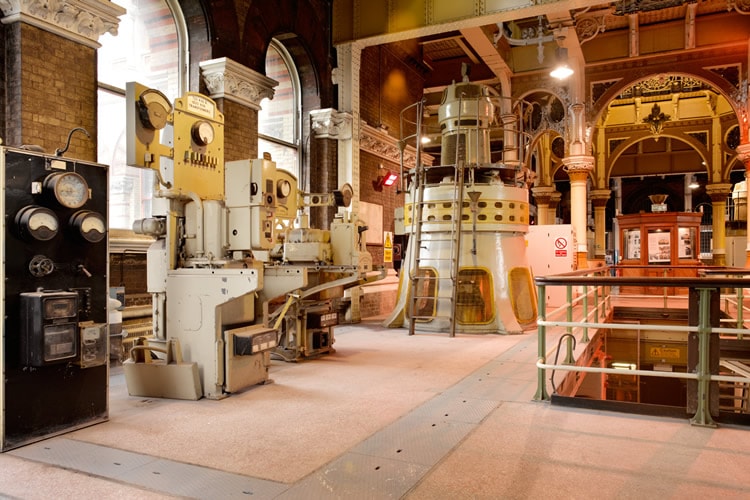
Abby Mill Pump Room – © Peter Dazeley
So, how did you start off?
It was very difficult to start with, but I am now 66 and I started out when I was 15, so I drew on the help of friends and acquaintances, as well as those I’ve worked with. For instance, Henry VIII’s wine cellar is located underneath the MOD (Ministry of Defence) and they gave us permission, but then withdrew it again. But when I was at Downing Street, I go talking to the Head of Security there and he got us back in there. Things got easier as we went along.
I also met a lot of people through playing golf! For instance, the In and Out Club on Piccadilly is the military and navy club and a member of my golf club was able to get us in there. I spent two years trying to get into the Ram brewery in Wandsworth and then played golf with an estate agent from Savills, and he got us into the brewery. We read the papers and kept an eye on things that were happening.
It was a lovely thing for me as a hobby and experience. I’m a born and bred Londoner, but we went to places that I’d walked past and never gone into. Admittedly, some of the places that we went too do allow people in on tours – such as Big Ben and Harrow School, but people don’t always know these things are there.
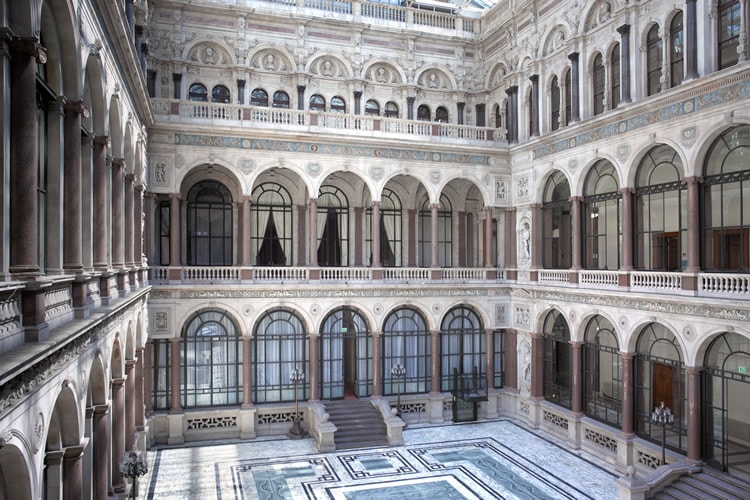
Foreign Office Durbar Court – © Peter Dazeley
Any particular highlights?
We went to the Midland Bank, which was amazing. It was designed by Sir Edward Lutyens and still has drawers for canes and cabinets for top hats to be stored in! I found Henry VIII’s wine cellar fascinating. The In and Out Club was wonderful and at The Royal Naval College at Greenwich, they showed me an undercroft of the original Greenwich Palace, which is all that’s left from the original structure.
You must have found out some fascinating facts…
Yes – at Big Ben we weren’t given hard hats or ear defenders, but Big Ben has a crack and a hole in it. That’s because the original hammer was too heavy and broke the bell.
And we went to Whitechapel bell foundry, where they make bells for churches around the country. The bells don’t last forever, so they break them up and reuse them. They’ve made bells for the Queen’s Jubilee and the boat procession up the Thames, Bow Bells and Big Ben.
At the Royal Naval College they’ve built the pensioners that live there a bowling alley and they practise with old wooden cannonballs! And the backstage areas of the theatres were amazing – through the Really Useful Company we got to visit Theatre Royal Drury Lane, Her Majesty’s and the Palladium and see all the stars’ dressing rooms. At Her Majesty’s they have a thunderball run. It’s a wooden contraption on the side of the building, which they use to recreate the sound of thunder.
And Downing Street is like a TARDIS. It goes on forever. I saw where the IRA had attacked it. We were invited into Court No 1 at The Old Bailey and nobody is allowed in there. It was an amazing place and we had the run of it on a Saturday. I think one of my favourite shots is of a white arch at the court with a shard of glass embedded in the wall from an IRA attack. Very poignant shot. And I love the photo of the tiny lawn mower motor that drives round the BT tower. There were so many interesting places.
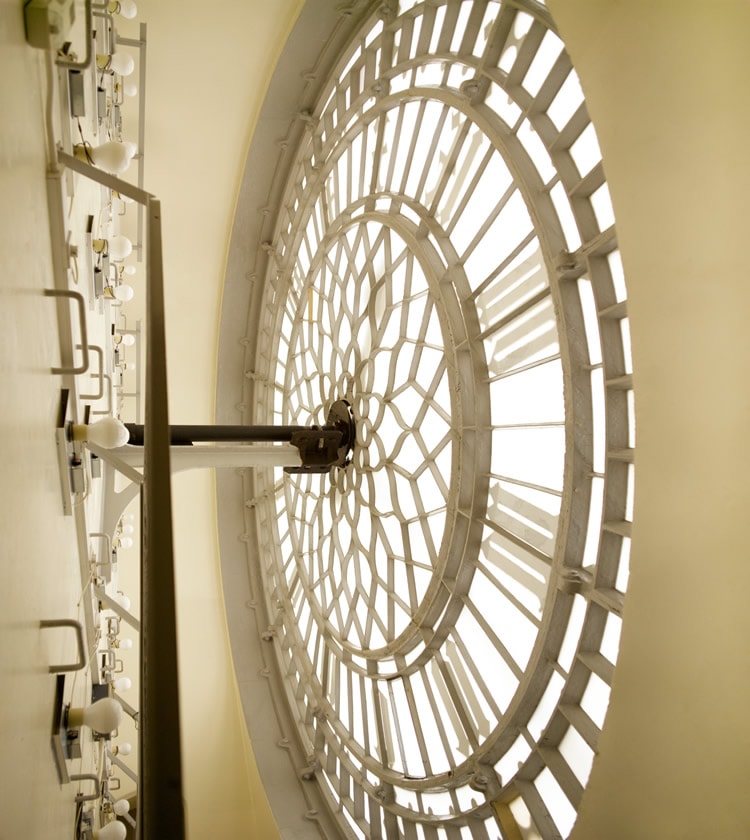
BB Clock face from inside, south – © Peter Dazeley
And once you’d found a publisher?
We shot a lot of material. And it’s difficult to find a publisher but when you do your vision for your book suddenly becomes their vision as well. You do buy into a publisher’s creativity and they do massive PR, marketing and distribution. We did masses of PR ourselves as well. I’m very lucky that the editors of The Mirror and The Express are friends and they gave us good publicity. And we went back to Creative Review because they’d been so helpful with the original Battersea shots.
The publisher’s were the ones that wanted to add words and they found Mark Daly. But I think it’s a much better book with him there. It’s fascinating to see what he found out and I think the book will be more successful with his words. He brought the book to life and adds a lot.
I saw that you shot the images with a Hasselblad 503CW (which I used to use)…
Yes, I shot on the Hasselblad mostly and tried to keep people out by using long exposures. We’ve got a Leaf 52MP back for the Blad and for me that’s a great combination. The latitude on digital backs is huge compared to film. We used natural light and long exposures because I didn’t want to change the character of the buildings. The only retouching we did was to remove things such as security cameras. A digital file is, of course, only a starting point.
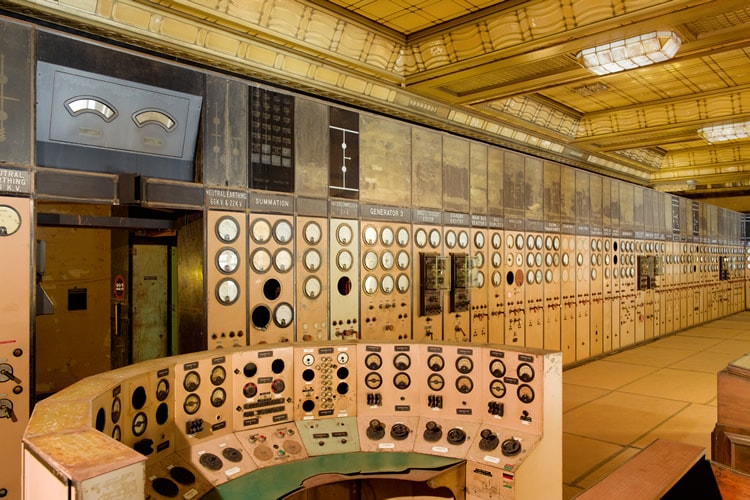
Battersea power station – © Peter Dazeley
And were there any places that proved difficult?
The Bank of England was very difficult as we had to fill in eight pages of legal documents and then they wouldn’t even let me see the gold! But we got in and took great images. The Royal Opera House on the other hand wanted to charge us £300 per hour for security! So we didn’t shoot them because they were so difficult.
What’s sad is that lots of the things we photographed won’t be there in the future. The In and Out club is being turned into a private house. And at Alexandria Palace there’s a theatre that did its last production in the 1930s. It’s just a mess and no explanation as to why it’s there. They are looking for lottery money to do it up, but if they’re not successful (which it’s likely they won’t be) then it will just continue to be a mess.
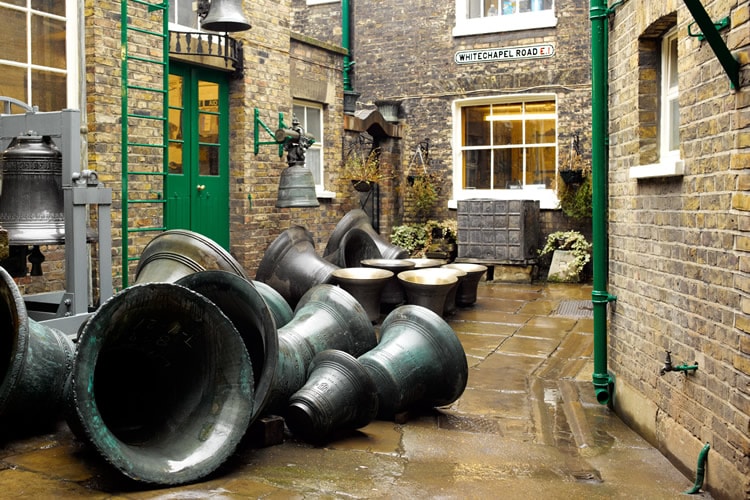
Whitechapel Bell Foundry, courtyard – © Peter Dazeley
What are your thoughts on the future of photography? You’re in the top 1%, but what about those coming out of college now?
Well, I bought a Nikon D800 recently and it’s so easy to use that I think everyone will be taking photos. Photography is changing and there’s no work for new photographers to do. I think it will be extraordinarily difficult for the next generation to make money. It’s not the perfect dream anymore. My background was always in advertising, but stock photography has always been very good to me. Now there’s so much choice and a good enough photo will do.
Lots of people looted the images that were published in Creative Review. People ripped off images and got the descriptions wrong. It’s very sad. How will people of the future create if people won’t pay?
But you have to embrace the technology – I remember a really arrogant ad from Kodak back in 2006-ish. They invented a digital camera and then hid it in a drawer because they wanted to keep selling film and cameras. You have to move with the times.
Thank you so much for your time Peter. Finally, how is the book performing in its first few weeks of publication?
Well, we only published on 2nd October and we’re already number one on Amazon UK for Arts, Architecture and Photography. And we’re 118th on the bestseller list and that’s up against novels and celebrity stuff selling for 99p.
Very pleased with how it’s performing so far and I hope it will take off on the other side of the pond as well.
Big thanks to Peter for taking the time out of his busy schedule for this interview. You can find Unseen London on Amazon.
All the images in this article were used with permission. Images taken from the book Unseen London. Photographs by Peter Dazeley, www.peterdazeley.com, Text by Mark Daly, Published by Frances Lincoln, £30, www.franceslincoln.com
